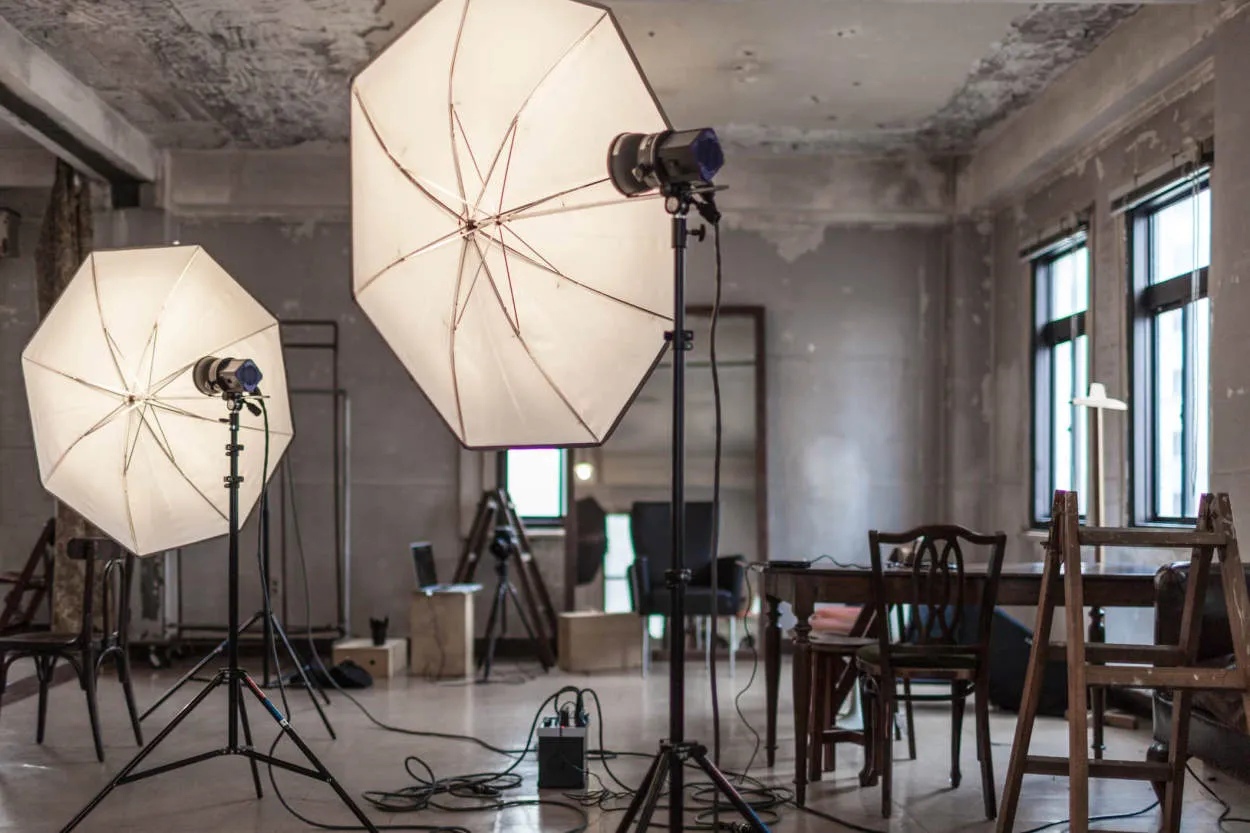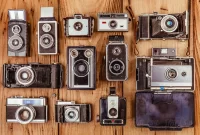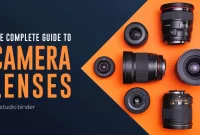When it comes to professional photography in the USA, choosing the right equipment is essential. From cameras to lenses and lighting setups, having the right tools can make all the difference in capturing high-quality images. In this article, we will explore the key factors to consider when selecting your photography gear.
Understanding Different Camera Body Types and Their Applications
In the world of professional photography, choosing the right equipment is crucial. One key aspect to consider is the type of camera body. Different camera body types have their own unique features and applications, catering to various photography styles and needs.
DSLR (Digital Single Lens Reflex)
DSLR cameras are popular among professional photographers for their versatility and image quality. These cameras use a mirror mechanism to reflect light through the lens into an optical viewfinder, allowing for precise framing and focusing. DSLRs offer a wide range of interchangeable lenses, making them ideal for capturing high-quality images in various settings.
Mirrorless
Mirrorless cameras have gained popularity in recent years due to their compact size and advanced features. Unlike DSLRs, mirrorless cameras do not have a mirror mechanism, resulting in a smaller and lighter body. They use electronic viewfinders or LCD screens for framing images. Mirrorless cameras excel in street photography, travel photography, and videography, offering fast autofocus, excellent image quality, and silent shooting.
Medium Format
Medium format cameras are used primarily by professional photographers who demand the highest image quality and resolution. These cameras feature a larger sensor size than DSLRs and mirrorless cameras, resulting in incredibly detailed and sharp images. Medium format cameras are commonly used in commercial and studio photography, fashion photography, and landscape photography.
Compact Point-and-Shoot
Compact point-and-shoot cameras are portable and easy to use, making them suitable for beginners or casual photographers. These cameras have fixed lenses and automatic settings, simplifying the photography process. While they may not deliver the same level of image quality as other camera types, compact point-and-shoot cameras are ideal for everyday use and capturing quick moments on the go.
When choosing the right camera body, consider your photography style, budget, and specific requirements. Each camera type has its own strengths and limitations, so it’s important to research and test different models before making a decision.
Selecting the Ideal Lenses for Various Genres of Photography
In the world of professional photography, choosing the right equipment is crucial to capturing stunning images. One essential component is selecting the ideal lenses for different genres of photography. Each genre has its own unique requirements and demands, and having the right lenses can greatly enhance the quality of your work.
1. Portraiture: When it comes to capturing compelling portraits, prime lenses are widely preferred. They have a fixed focal length that allows for shallow depth of field, resulting in beautifully blurred backgrounds that bring focus to the subject. Popular choices include a 50mm or 85mm lens, providing excellent image sharpness and low-light performance.
2. Landscape: For capturing wide sweeping vistas and stunning landscapes, wide-angle lenses are a must. They allow you to capture a broader perspective, emphasizing the vastness and grandeur of natural scenes. Opt for lenses in the range of 16-35mm for breathtaking landscape shots.
3. Wildlife: Shooting wildlife requires specialized lenses with long focal lengths to bring distant subjects closer. Telephoto lenses with a focal length of 300mm or more are ideal for capturing detailed images of animals in their natural habitat. Additionally, having image stabilization technology can be beneficial for reducing camera shake.
4. Sports: Sports photography demands lenses with fast autofocus and a long reach to capture fast-paced action. Telephoto lenses with a focal length of at least 200mm are commonly used to get close-up shots of athletes in motion. Look for lenses with a wide maximum aperture for better performance in low-light situations.
5. Macro: Macro photography involves capturing close-up images of small subjects, often revealing intricate details that are not visible to the naked eye. Dedicated macro lenses with 1:1 magnification ratio are essential for achieving sharp and detailed macro shots. These lenses allow you to focus at very short distances, enabling the capture of tiny subjects with stunning clarity.
Remember, choosing the right lenses for your genre of photography can make a significant difference in the overall outcome of your work. Take into consideration factors such as focal length, maximum aperture, and image stabilization when making your selections. By investing in the right lenses, you’ll be equipped to take your professional photography to new heights.
Exploring Advanced Accessories to Enhance Your Workflow
When it comes to professional photography, choosing the right equipment is crucial for achieving stunning results. In the USA, where the photography industry is highly competitive, staying up to date with the latest advanced accessories can give you an edge over your competitors.
One essential accessory is a high-quality tripod. A sturdy tripod provides stability and allows you to capture sharp images, especially in low light or long exposure situations. Look for tripods with adjustable height and a robust build to support various types of cameras and lenses.
In addition to a tripod, investing in a reliable wireless remote control can significantly enhance your workflow. With a wireless remote, you can operate your camera from a distance, enabling you to experiment with different angles and compositions without touching the camera itself. This accessory is particularly useful for self-portraits or when capturing shots from unconventional positions.
Another accessory that can elevate your photography is a versatile external flash. While the built-in flash on your camera can be handy in certain situations, an external flash gives you more control over the lighting conditions. It allows for bounce flash photography, where the flash is directed at a surface, such as a ceiling or wall, to create more diffused and flattering light.
Furthermore, considering the ever-growing popularity of aerial photography, a drone can be an excellent addition to your equipment arsenal. Drones equipped with high-resolution cameras offer a unique perspective and the ability to capture breathtaking aerial shots. However, be sure to check the local regulations and obtain necessary permits before operating a drone for commercial purposes.
Last but not least, don’t overlook the importance of a reliable camera bag or backpack. Investing in a well-designed bag will not only protect your gear but also make it easier to transport and organize. Look for features like padded compartments, adjustable dividers, and comfortable straps to ensure maximum convenience.
As a professional photographer, staying ahead in the industry requires continuous improvement and exploring new possibilities. By incorporating these advanced accessories into your workflow, you can unlock new creative opportunities and deliver exceptional results.
Considering Tripods and Stabilization Options for Sharper Images
When it comes to capturing professional-quality images, choosing the right equipment is essential. In the world of photography, tripods and stabilization options play a crucial role in ensuring sharp and clear images.
A tripod is a three-legged stand that provides stability and eliminates camera shake. It is particularly useful in low-light situations or when using longer exposure times. When choosing a tripod, consider factors such as size, weight, material, and leg locking mechanisms to find one that suits your needs.
Another option to achieve image stabilization is by using image stabilization technology built into some cameras or lenses. This technology compensates for hand movements, allowing you to capture sharper images without using a tripod. However, keep in mind that this feature is not available on all cameras and lenses, so do your research before making a purchase.
In addition to tripods and built-in stabilization, there are also handheld stabilizers and gimbals available. These devices provide stability while allowing for more mobility and flexibility compared to traditional tripods. They are especially beneficial for photographers who need to capture moving subjects or shoot in challenging environments.
Ultimately, the choice between tripods and stabilization options depends on your specific photography needs and preferences. It is recommended to try out different options before making a decision. By investing in the right equipment, you can enhance the overall quality of your photographs and take your professional photography to the next level.
Conclusion
In conclusion, when it comes to professional photography in the USA, choosing the right equipment is essential. The photography landscape is highly competitive, and having the right gear can give photographers an edge in capturing high-quality images. By considering factors such as camera bodies, lenses, lighting equipment, and accessories, photographers can ensure they have the necessary tools to bring their creative vision to life.




